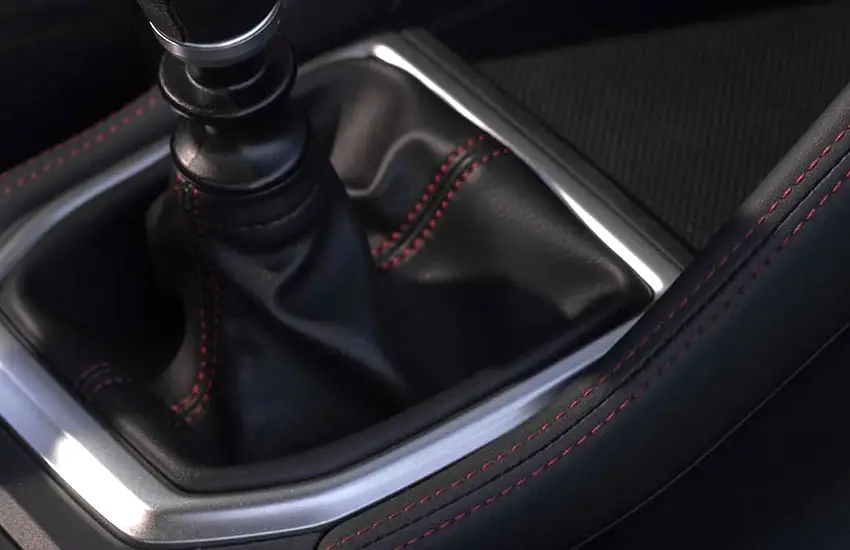As an Amazon Associate, I earn from qualifying purchases at no extra cost to you.
What Does Variable Transmission Mean? Get the Power and Efficiency You Need
Variable transmission, often referred to as continuously variable transmission (CVT), is an innovative type of automatic transmission that offers a smoother driving experience and better fuel efficiency. But what exactly does it mean, and how does it work? Let’s dive into the details to understand the ins and outs of variable transmission.

Understanding Variable Transmission
Variable transmission, specifically CVT, stands apart from traditional automatic and manual transmissions by utilizing a system that provides an infinite number of gear ratios. This means that instead of having a set number of gears (like 5 or 6 in traditional systems), a CVT can continuously change its gear ratio to match the driving conditions. This results in a smoother and more efficient ride.
Traditional automatic transmissions have a fixed number of gears that they shift between as the car accelerates or decelerates. For example, a car might shift from first to second gear, then to third, and so on. Each shift represents a change in the gear ratio, which is the relationship between the engine speed and the speed of the car’s wheels. In contrast, a CVT doesn’t have distinct gears. Instead, it uses a system of pulleys and belts to vary the gear ratio seamlessly.
How Does a CVT Work?
A CVT uses a pair of pulleys connected by a belt or chain. One pulley is connected to the engine, and the other is connected to the drive wheels. These pulleys can change their diameter, allowing the belt to move smoothly between them and vary the gear ratio. By continuously adjusting the diameter of the pulleys, the CVT can keep the engine running at its most efficient speed, regardless of the car’s speed.
The primary components of a CVT include:
- Primary Pulley (Drive Pulley): Connected to the engine, it controls the input from the engine’s power.
- Secondary Pulley (Driven Pulley): Connected to the wheels, it controls the output to the car’s drivetrain.
- Belt or Chain: Transfers power between the pulleys.
As the car accelerates, the primary pulley increases in diameter while the secondary pulley decreases, and vice versa when the car decelerates. This continuous adjustment allows the engine to operate at its optimal speed for fuel efficiency and power delivery.
Advantages of CVT
One of the main benefits of a CVT is its ability to keep the engine at its most efficient RPM (revolutions per minute). This not only improves fuel economy but also reduces emissions. Additionally, because there are no gear shifts, the ride is much smoother. This can be particularly noticeable during acceleration, where traditional transmissions might cause a jerky motion as they shift through the gears.
Other advantages include:
- Enhanced Fuel Efficiency: By maintaining the engine at its optimal performance level, CVTs can often achieve better fuel efficiency than traditional automatic transmissions.
- Smooth Driving Experience: The absence of gear shifts means smoother acceleration and deceleration.
- Reduced Emissions: Better fuel efficiency typically translates to lower emissions, making CVTs more environmentally friendly.
- Simple Design: Fewer moving parts can mean less maintenance and fewer chances for mechanical failures.
Disadvantages of CVT
Despite their benefits, CVTs also have some drawbacks. Some drivers may not enjoy the feel of a CVT because it can seem less responsive than a traditional transmission. The engine might also sound like it’s constantly revving, which can be disconcerting. Additionally, while CVTs can be more efficient, they can also be more expensive to repair if something goes wrong.
Key disadvantages include:
- Unfamiliar Driving Feel: The seamless nature of CVT can feel strange to drivers accustomed to the distinct shifts of traditional transmissions.
- Potential Noise: The constant engine speed can lead to a droning noise that some drivers find annoying.
- Higher Repair Costs: CVTs can be more complex and expensive to repair compared to traditional transmissions.
- Limited Towing Capacity: Some CVTs may not handle heavy towing as well as traditional transmissions.
Types of CVT Systems
There are several types of CVT systems, each with its own unique mechanism:
- Pulley-Based CVT: The most common type, as described earlier, uses pulleys and a belt.
- Toroidal CVT: Uses discs and power rollers instead of pulleys and belts, offering similar benefits with a different mechanical setup.
- Hydrostatic CVT: Utilizes hydraulic pumps and motors to achieve variable transmission, often found in heavy machinery and equipment.
Applications of CVT
CVTs are widely used in a variety of vehicles, from small cars to larger SUVs. They are also common in scooters and snowmobiles, where smooth power delivery is crucial. Additionally, hybrid vehicles often use CVTs to optimize the efficiency of the electric motor and gasoline engine working together.
Future of CVT
The future of CVT looks promising, especially with the automotive industry’s shift towards more fuel-efficient and environmentally friendly technologies. As manufacturers continue to refine and improve CVT technology, we can expect even better performance and efficiency from future models.
Benefits and Drawbacks of Variable Transmission
Variable transmission, particularly CVT, offers a range of benefits that make it an attractive option for many drivers. However, it also has some drawbacks that need to be considered.
Benefits
- Improved Fuel Efficiency: CVTs can maintain the engine at its most efficient RPM, leading to better fuel economy.
- Smoother Driving Experience: Without the distinct shifts of traditional transmissions, the ride is smoother and more comfortable.
- Lower Emissions: Enhanced fuel efficiency often results in reduced emissions, which is better for the environment.
- Simplicity in Design: Fewer moving parts can mean reduced maintenance and a lower chance of mechanical issues.
- Adaptive Performance: CVTs can quickly adapt to changing driving conditions, providing optimal power and efficiency at all times.
Drawbacks
- Unconventional Driving Feel: Some drivers may find the smooth, continuous nature of CVTs to be less engaging than traditional transmissions.
- Potential for Noise: The constant engine speed can produce a droning noise that might be bothersome.
- Higher Repair Costs: Due to their complexity, CVTs can be more expensive to repair if something goes wrong.
- Limited Towing Capacity: CVTs may not be as capable of handling heavy towing as traditional automatic transmissions.
- Potential for Overheating: In some cases, CVTs can overheat if pushed beyond their design limits, especially during prolonged heavy use.
Comparing CVT to Other Transmissions
When comparing CVTs to traditional automatic and manual transmissions, several key differences stand out:
- Manual Transmission: Offers a direct connection between the engine and wheels, providing a more engaging driving experience. However, it requires more effort from the driver and can be less fuel-efficient.
- Automatic Transmission: Shifts gears automatically, offering convenience and ease of use. It provides a good balance between performance and efficiency but can be less smooth than a CVT.
- CVT: Delivers the smoothest ride and best fuel efficiency, but with a driving experience that may feel less engaging to some drivers.
Real-World Performance
In real-world driving, CVTs can offer significant advantages, particularly in stop-and-go traffic where the ability to seamlessly adjust the gear ratio can lead to better fuel economy and a more comfortable ride. On highways, the efficiency benefits continue, with the engine able to run at its most efficient speed for extended periods.
However, drivers who enjoy a more spirited driving experience might find CVTs lacking in responsiveness. The constant engine speed can feel unnatural, and the absence of gear shifts can make the driving experience feel less dynamic.
Maintenance and Reliability
Maintaining a CVT is crucial to ensure its longevity and performance. Regular maintenance includes:
- Fluid Changes: CVT fluid needs to be changed at recommended intervals to ensure proper lubrication and cooling.
- Belt/Chain Inspection: Regular inspections can help identify any wear or damage to the belt or chain, preventing more serious issues.
- Software Updates: Some CVTs rely on electronic control systems that may require periodic updates.
While CVTs have fewer moving parts than traditional transmissions, they can still encounter issues. Common problems include:
- Belt/Chain Wear: Over time, the belt or chain can wear out, leading to slipping or reduced performance.
- Fluid Leaks: Ensuring the CVT remains properly lubricated is essential, and fluid leaks can cause significant issues.
- Electronic Control Failures: The electronic systems that control the CVT can sometimes fail, requiring diagnostic and repair work.
Choosing the Right Transmission
When deciding whether a CVT is right for you, consider your driving habits and preferences. If you prioritize fuel efficiency and a smooth driving experience, a CVT might be an excellent choice. However, if you enjoy a more engaging driving experience or need a vehicle capable of heavy towing, you might prefer a traditional automatic or manual transmission.
Are These Questions in Your Mind?
Is it true that CVTs are less durable than traditional transmissions?
While some early CVT designs had durability issues, modern CVTs are built to last and can be very reliable with proper maintenance.
Can a CVT handle heavy towing?
Generally, CVTs are not as well-suited for heavy towing as traditional automatic transmissions. However, advancements are being made to improve their capabilities.
Do I need to change the fluid in a CVT more often than in other transmissions?
CVT fluid should be changed according to the manufacturer’s recommendations, which might be more frequent than traditional transmission fluid changes.
Is it more expensive to repair a CVT?
Repair costs for CVTs can be higher due to their complexity and specialized components.
Can I switch from a traditional transmission to a CVT in my current car?
Switching transmission types in a car is a major modification that is typically not feasible or cost-effective.
Do CVTs provide better acceleration than traditional transmissions?
CVTs can provide smooth and continuous acceleration, but some drivers may feel they lack the punch of a traditional automatic or manual transmission.
Is it normal for a CVT to make a whining noise?
A certain level of noise is normal for CVTs, but excessive or unusual noises should be checked by a mechanic.
Can a CVT improve my car’s fuel efficiency?
Yes, one of the main advantages of a CVT is improved fuel efficiency, especially in stop-and-go traffic.
Is it true that CVTs are more suitable for smaller cars?
While CVTs are common in smaller cars, they are also used in larger vehicles and SUVs, depending on the design and intended use of the vehicle.
Do all hybrid vehicles use CVTs?
Many hybrid vehicles use CVTs to seamlessly manage the power from both the electric motor and the gasoline engine, but not all hybrids use CVTs.











